I'm working on pdf signatures using itext7 and currently need to support all PAdES signature levels: B-B, B-T, B-LT, B-LTA https://ec.europa.eu/digital-building-blocks/wikis/display/ESIGKB/What+are+the+B-T-LT+and+LTA+levels+of+an+electronic+signature
My problem is how i can create B-LT signature with itext? I have created B-B and B-T with this code:
signer.signDetached(
new BouncyCastleDigest(),
customExternalSignature,
new Certificate[]{clientX509Certificate},
null,
null,
tsaClient,
0,
PdfSigner.CryptoStandard.CADES);
Then I wanted add B-LTA level so I have used this code https://github.com/mkl-public/testarea-itext7/blob/master/src/main/java/mkl/testarea/itext7/signature/AdobeLtvEnabling.java to check adding BASELINE-LTA level, but after applying this logic to my signature adobe says that it is BASELINE-LT
This creates two questions:
- Is this implementation in AdobeLtvEnabling correct way to add PAdES level B-LT?
- Is this proper way to add B-LTA level?
//This method extend B-T signature to B-LT
private byte[] addLt(final byte[] signed) throws IOException, GeneralSecurityException {
final ByteArrayOutputStream out = new ByteArrayOutputStream();
try (InputStream resource = new ByteArrayInputStream(signed);
PdfReader pdfReader = new PdfReader(resource);
PdfWriter pdfWriter = new PdfWriter(out);
PdfDocument pdfDocument = new PdfDocument(pdfReader, pdfWriter, new StampingProperties().preserveEncryption().useAppendMode())) {
AdobeLtvEnabling adobeLtvEnabling = new AdobeLtvEnabling(pdfDocument);
IOcspClient ocsp = new OcspClientBouncyCastle(null);
ICrlClient crl = new CrlClientOnline();
adobeLtvEnabling.enable(ocsp, crl);
}
return addLtv(out.toByteArray());
}
//This method extend B-LT signature to B-LTA
private byte[] addLtv(final byte[] pdf) throws IOException, GeneralSecurityException {
final ByteArrayOutputStream signedFile = new ByteArrayOutputStream();
final PdfReader sourceDoc = new PdfReader(new ByteArrayInputStream(pdf));
final PdfSigner signer = new PdfSigner(sourceDoc, signedFile, STAMPING_PROPERTIES);
signer.timestamp(tsaClient, null);
return signedFile.toByteArray();
}
